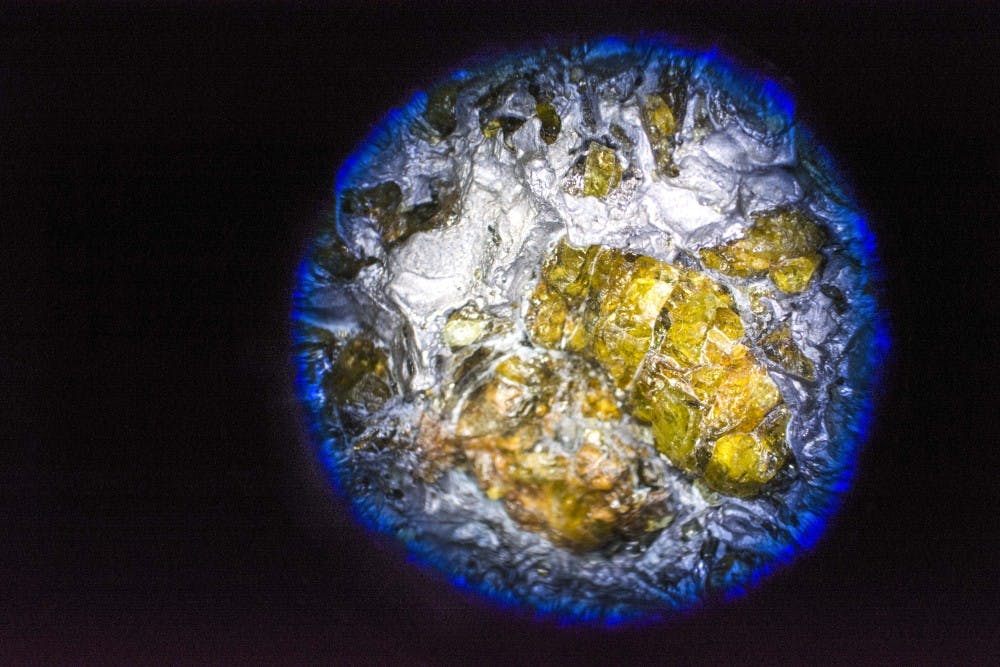The new facility will expand an already existing program based within the Department of Earth and Planetary Sciences into an interdisciplinary center.
The center will provide state-of-the-art equipment for the analysis of isotopes, which are elements such as oxygen, carbon or nitrogen that have different weights. For example, carbon has three isotopic forms: carbon-12, carbon-13 and carbon-14. All are carbon, yet they may behave slightly differently from each other and they have different numbers of a tiny particle called a neutron.
The levels or ratios of isotopes within an object provide it with a unique signature, like a fingerprint. Since nearly everything is made up of elements, this technique can be applied to components of virtually any scientific field.
Funding and support for the creation of the CSI has come primarily from the College of Arts and Sciences, the Office of the Vice President for Research and individual grants obtained by research professors.
“It was started about a year ago,” said Zachary Sharp, regents’ professor and director of the CSI, who estimates that the center will have its grand opening in about a month. “It’s just this wonderful new center that’s still young, but has attracted a lot of activity. We have had some very good success getting grants from NASA and the National Science Foundation.”
Having the center on campus will generate more opportunity for UNM students and faculty who want to use this type of analysis and also lend a competitive edge when applying for grant money, said Seth Newsome, assistant professor of biology and associate director of the CSI. He believes that the CSI will become self-sufficient shortly after opening, generating its own money in part by analyzing samples sent from researchers at other institutions.
“It’s not unlike running a business, in a way, because you’re offering a service to people — not only people here, but also certainly to our clients that are off-campus,” Newsome said.
It is the hope of both Sharp and Newsome that the center will serve to bring together scientists in multiple disciplines, from biology to planetary science to engineering or medicine.
“It is really tough to get different disciplines to work together, and a lot of the time those interdisciplinary studies are the ones that make major breakthroughs,” Sharp said.
Even before its official opening, equipment within the center is already being used to investigate an array of different subjects.
Senior research scientist in the UNM Institute of Meteoritics Karen Ziegler regularly uses the facility to analyze meteorite rocks. Since most rocks are composed largely of oxygen, by looking at different oxygen isotopes Ziegler is able to gain insight into the source of the meteorite, such as planets or asteroids. The analysis Ziegler performs is particularly difficult, and as a result samples are sent to her regularly from all over the world.
Get content from The Daily Lobo delivered to your inbox
It is her hope that gaining information into the origins of meteorite rocks can help piece together some of the evolutionary history of the solar system since its birth 4.8 billion years ago, Ziegler said.
Newsome recently used the same technology to investigate the exploding urban coyote population in Chicago, demonstrating the scope and flexibility of the technique.
“We know that one of the ways coyotes usually interact with people is by eating their food — going through trash cans,” Newsome said. “And the reason that [isotope analysis] works is because most of the things we eat as North Americans are based on corn. They either have corn syrup in them, or a lot of the meats that we eat are finished with corn.”
Corn has unique signatures of carbon isotopes that end up in the individual who eats it. In a coyote, the isotope signature can be detected within the whiskers, since they grow continuously like human hair. Collections of whisker samples from the population allowed Newsome and his team to assess whether or not the coyotes living within the city had adapted their habits to rummaging for human food rather than hunting for their own prey.
To encourage students to integrate these techniques into their own research projects, the CSI plans to hold a grant-writing contest for graduate students where they can receive funding to use the facility and generate pilot data.
“I’ve always dreamed of starting something like this,” Newsome said. “I feel like I’ve been very lucky to land here, where there are a lot of people that want to do this kind of thing. And there’s also an administration that sees that opportunity and helps make it happen.”
Lauren Topper is a freelance reporter at the Daily Lobo. She can be contacted at news@dailylobo.com, or on Twitter @DailyLobo.






